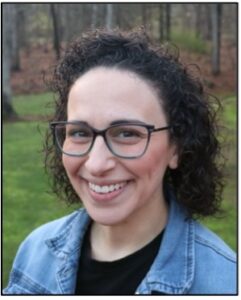Professional Learning Communities (PLCs) are nothing new. Many schools build in time, processes, and procedures to ensure their teachers are using PLCs as a part of their pathway to build themselves within the profession and grow the ways in which they deliver instruction to meet the needs of all students. PLCs are often groups of teachers who share content, grade level, and/or student situations. They operate with a shared set of norms and focus on how they can apply best practices to ensure student success in the classroom.
During the last year I had the opportunity to participate in a national level PLC for arts educators, the National Connected Arts Network (CAN). According to their website:
About CAN
The National Art Education Association, in partnership with the Educational Theater Association, the National Association for Music Education, the National Dance Education Organization, and the NYC Dept. of Education’s Arts Office launched Connected Arts Networks (CAN). CAN is a five-year grant initiative to create nationwide virtual Professional Learning Communities with educators in visual arts, music, theatre, dance and media arts.
CAN Mission
The purpose of CAN is to build a sustainable model of professional learning for arts educators in public schools and public charters to strengthen their pedagogy, instruction, and leadership skills in order to better serve students.
CAN Goals
- To develop highly effective arts educators, building their capacity to address Equity, Diversity & Inclusion and Social-Emotional Learning in their standards-based arts instruction through sustained, intensive, and job-embedded blended professional learning.
- To develop a local and national cadre of teacher leaders in the arts by building their content knowledge and leadership skills in order to expand the impact of arts learning for students and their communities.
- To develop accessible arts-based instructional materials, strategies, and toolkits to disseminate to arts educators nationwide, including synchronous and asynchronous professional development programs and digital resources.
- To create a model for developing, deepening, and maintaining effective partnerships among school communities, Local Education Agencies (LEAs), and national arts education associations.
As the only Visual Arts teacher in my building, I often feel that I am encountering educational situations unique to my classroom, and it is sometimes difficult to find others near me who can offer me additional support with a similar experience. In my CAN PLC, I am surrounded by my peers and am able to have conversations centered on content, curriculum, behaviors, and expectations that are shared because of our common background and focus. In addition to sharing, we also have a chance to grow our skills through collaboration. I am able to work with a mini-cohort of CAN teacher leaders and contribute to a lesson plan developed together during our PLC meetings.
Through collaborating with a stellar group of nationwide arts teachers, I am able to reflect on my own methods, learn new approaches, and see my students benefit from the process. By seeing how other teachers operate and have conversations about the why and how of what we do, it helps me see more clearly what I want to happen with learning in my own classroom and how I can effectively engage my students in that. I am also able to see how other teachers have adapted practices I share and use them to help improve their classrooms, too. This win-win approach to sharing is something that makes this PLC special and CAN offers that growth oriented focus to all participants.
And you can join, too! The National Connected Arts Network is expanding and will be accepting applications to participate starting in September of this year. All visual and performing arts educators are invited to participate. I highly encourage you to join this powerfully positive network and see how much you CAN grow.
___________________________________________________________________________________________________________
Editor’s Note: If you’ve been enjoying MAEIA’s professional learning on SEL and Culturally Responsible Teaching, you aren’t alone. Nafeesah Symonette and Heather Vaughan-Southard presented on these topics to the visual arts cohort of the CAN project last spring. Additional opportunities to engage in Nafeesah and Heather’s work, Embodied Practices, will be available this year through Better Together in the Arts workshops and a self-paced course coming soon!
 Since 2004, Janine Campbell has been teaching students in a middle school classroom. Her classroom has won local and national recognition in the Scholastic Art and Writing Awards. She was the 2015 Michigan Art Education Association Middle Level Educator of the Year and the 2015 National Art Education Association Western Region Middle Level Educator of the Year. She was awarded the 2019 Artsonia Leadership Award and the 2020 MACUL Innovative Teacher of the Year Award. You can follow her classroom at @campbellartsoup or visit her blog at www.bcwmsart.weebly.com.
Since 2004, Janine Campbell has been teaching students in a middle school classroom. Her classroom has won local and national recognition in the Scholastic Art and Writing Awards. She was the 2015 Michigan Art Education Association Middle Level Educator of the Year and the 2015 National Art Education Association Western Region Middle Level Educator of the Year. She was awarded the 2019 Artsonia Leadership Award and the 2020 MACUL Innovative Teacher of the Year Award. You can follow her classroom at @campbellartsoup or visit her blog at www.bcwmsart.weebly.com.
The contents of this article were developed under a grant from the Department of Education’s Assistance for Arts Education Program. However, these contents do not necessarily represent the policy of the Department of Education or endorsement by the Federal Government.
Photo courtesy of National Art Education Association website.
Click here for a Printer friendly version of this article.
Leave a Reply
You must be logged in to post a comment. Don't have an account? Register Here.